In the early 90s four Swedish teenagers developed Shenandoah, a video game for the Amiga. They got close to release but ended up abandoning the game. About 20 years later the game’s code was found in a pile of old floppy disks, and the game was finally completed.
Old-School
What we have is a game that is genuinely old-school. A new engine was developed for the game to allow it to run on modern systems, however the developers still limited themselves based on the technology available in 1993. For example, there are never more than 32 colours on the screen, and the number of sprites are limited.
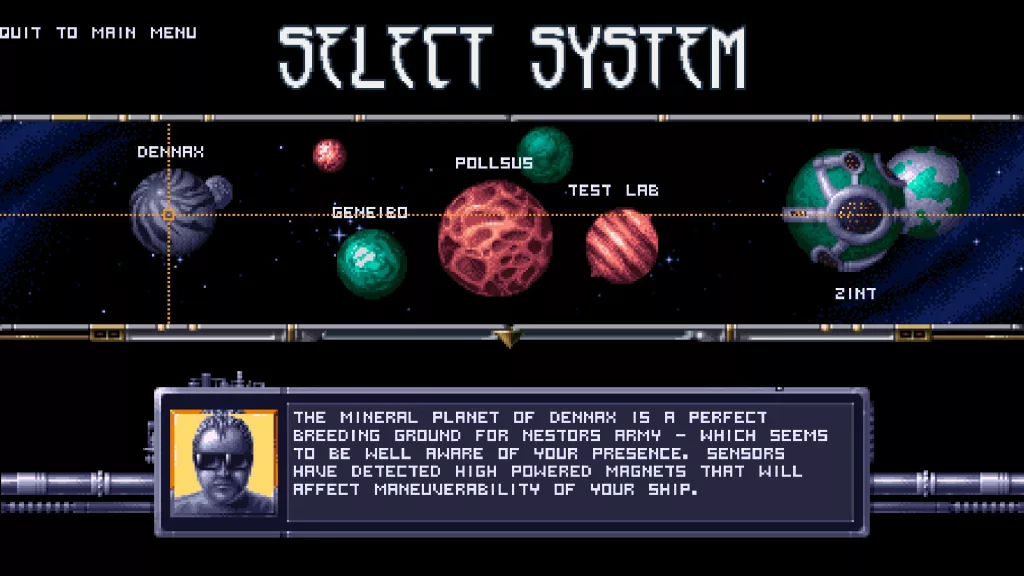
It’s unclear if they changed any part of the game’s design for modern audiences, but they kept the same level design, art, and assets from the original implementation. If anything has changed I would guess it was the difficulty modes, with the easiest giving generous check points and unlimited lives. In 1993 would would have had 3 lives and maybe some continues and that’s it (which is what the hardest difficulty gives you in the modern game).
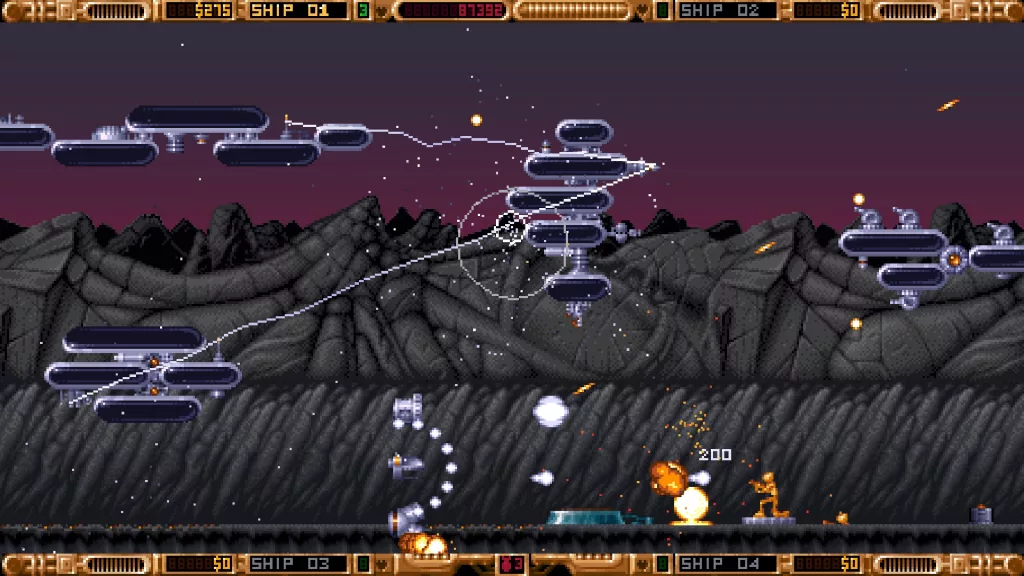
The other change would be the support for multiplayer across multiple devices, something which wasn’t really a thing in 1993. Multiplayer did, of course, exist in 1993, but it was with multiple controllers connected to a single microcomputer or console. Split screen was very common in those days, though 1993 doesn’t use this as all players will be in the same place.
Shoot ‘Em Up
1993 is a side-scrolling shoot ’em up. The screen automatically scrolls to the left and the player has to shoot enemies as they advance through the level. For me, I thought of Xenon 2 when I first played this, but it is more similar to games like R-Type or Gradius (two games I never played back in the day).
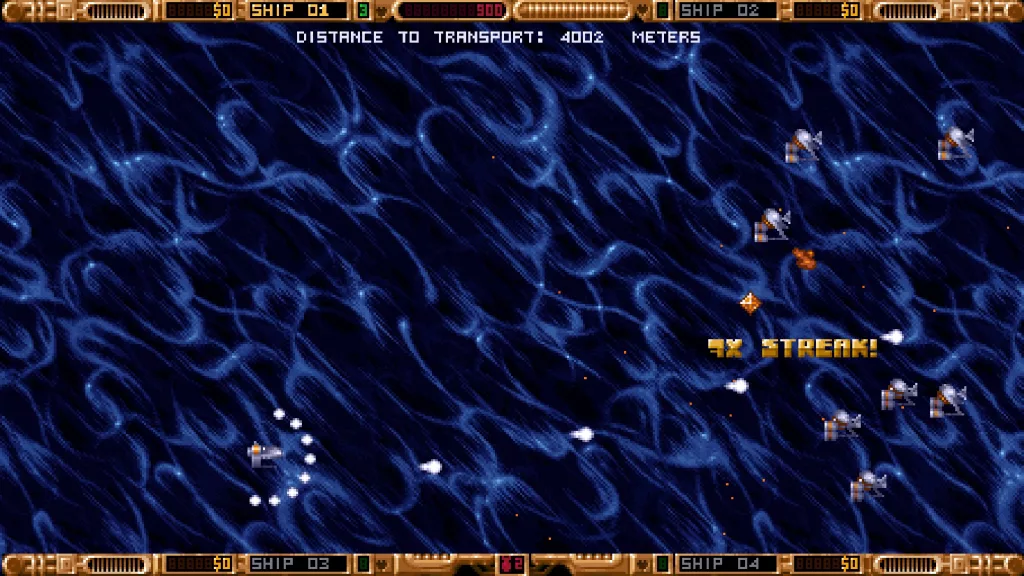
The game is also, in part, a bullet hell, requiring the player to carefully manoeuvre and avoid a mass of bullets on the screen. The secret final boss really leans into this aspect and is a true bullet hell. (Sidenote: I always thought bullet hell was a more modern genre of video game, but it turns out the earliest game in the genre was Batsugun, released in 1993!)
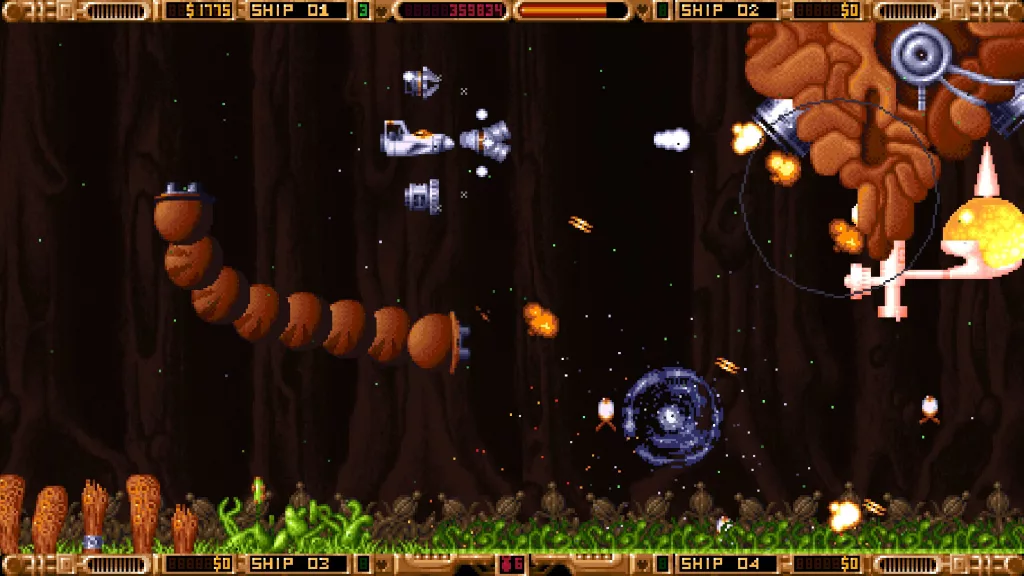
A unique element to this game is the shield. It can be rotated around the ship to face in any direction. If a bullet hits it the shield will absorb it, but that part of the shield will disappear. It will recharge after a short time, but if another bullet flies through it won’t be blocked and the ship will take damage. It also serves as a makeshift health bar: as the ship is damaged, the size of the shield is reduced.
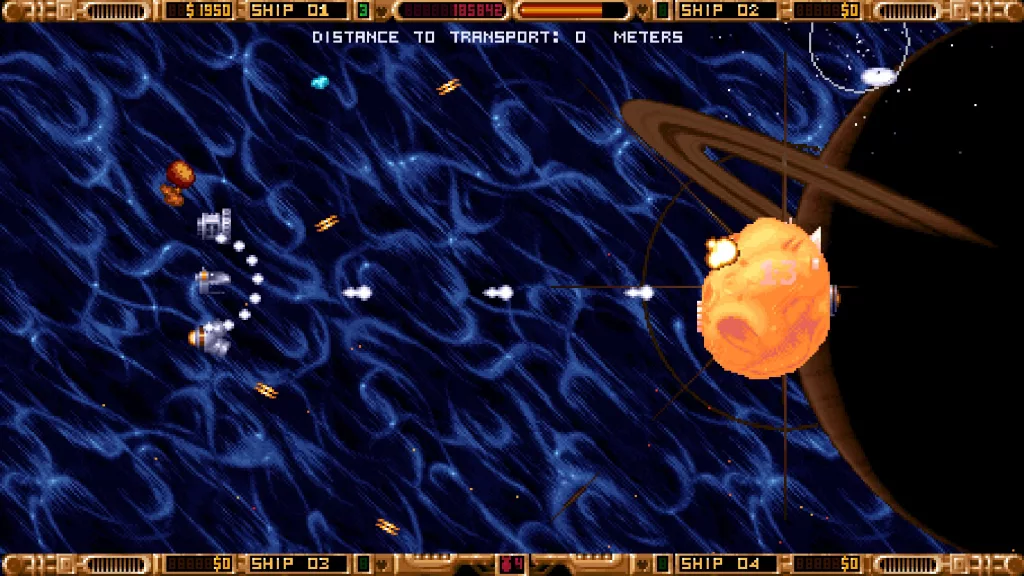
At the end of each level is a boss fight: a harder enemy with an attack pattern you will need to learn if you want to defeat it. These are the parts of the game that usually become more bullet hell than the rest. It’s also fun to watch the bosses fall apart as you blow pieces of them off.
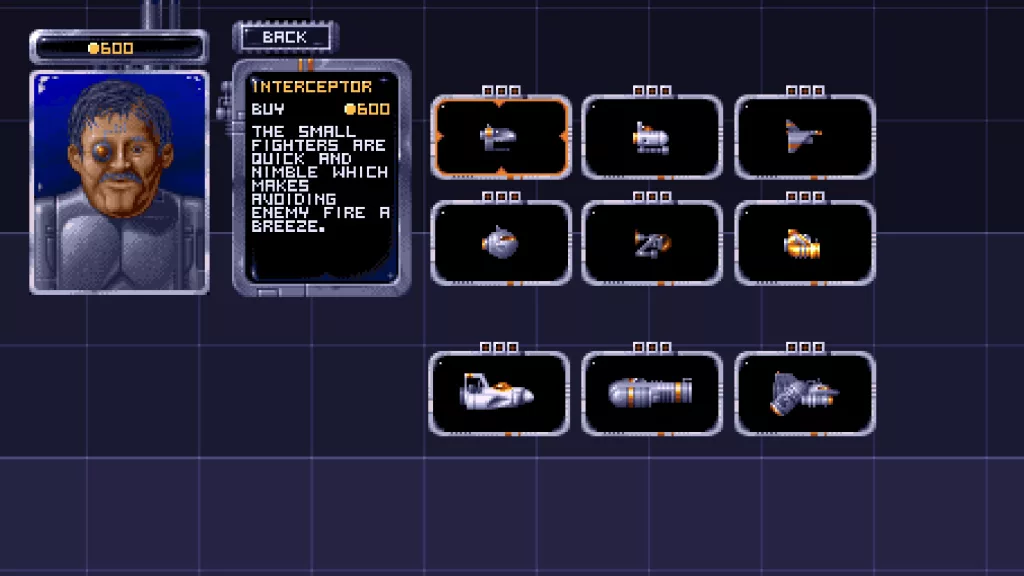
As you play through the game you can collect currency that will allow you to purchase/upgrade new weapons and ships. There are a large number of weapons with different effects. You won’t be able to purchase all of them in a single run of the game so you have to choose carefully.
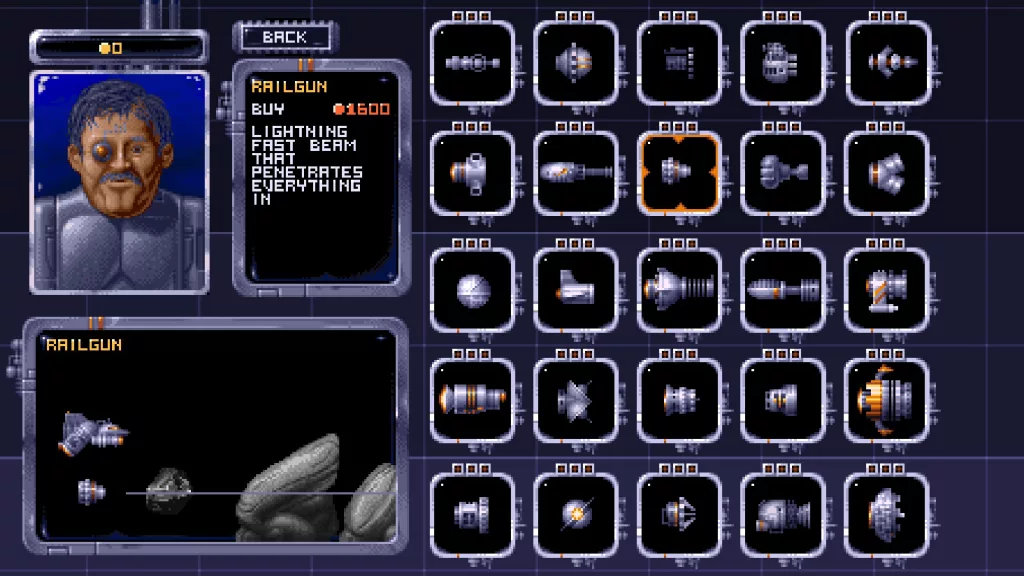
Despite literally being a 90s video game, the game plays smoothly on modern hardware. What you get is an old school game that feels modern. It doesn’t feel like a port or an emulated game, it feels like a game an indie developer might make today.
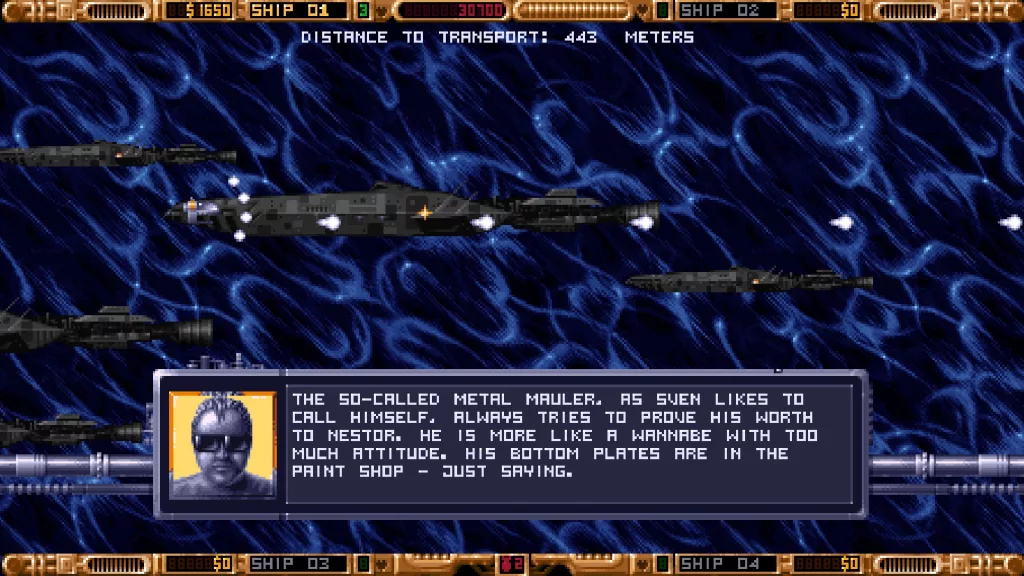
The graphics are what we would now call pixel art. Though the original designs have been kept according to the developers, I suspect the art may have at least been updated to look better on hi-definition displays. The pixel art in the 90s was designed to take advantage of the blurriness that CRT displays had back then, and often these graphics don’t translate well to modern screens. If you use an emulator to play old console games they will look a lot more pixelated than they would have on a CRT.
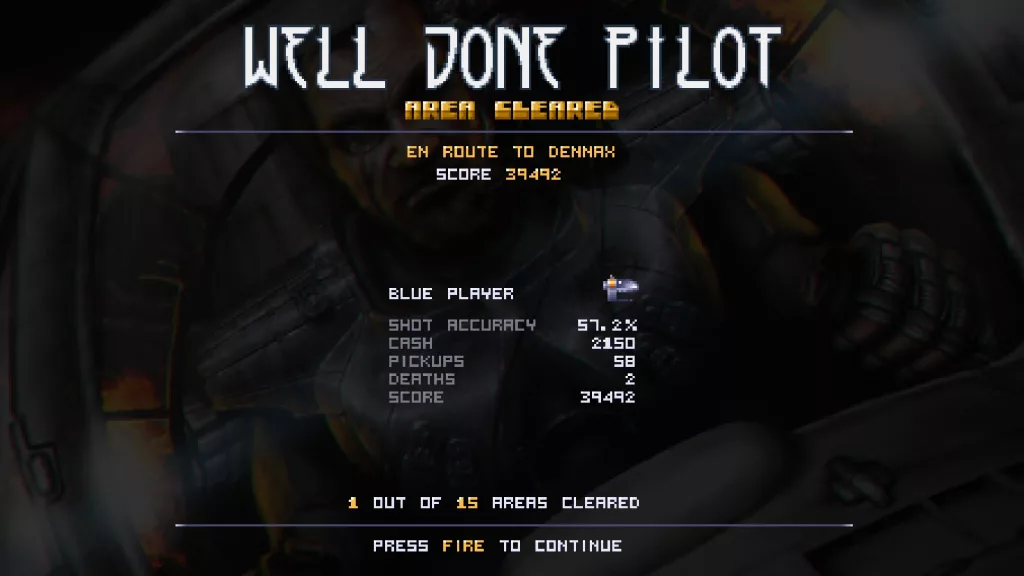
The music sounds a lot like something you might have heard back in the 90s. I don’t know if the music was actually written in the 90s, but if you told me it was I’d believe you. It definitely reminds me of games like Xenon 2 and other action games I played back then. The sound effects are also reminiscent of the era which, again, may be new effects that sound old, or simply the old effects from the original game.
Failure?
I played this game through to the final secret mission on the easiest difficulty level. I died a fair amount, but the game is forgiving in this mode so I managed to complete the game within a couple of days. Except for that damned last secret level.
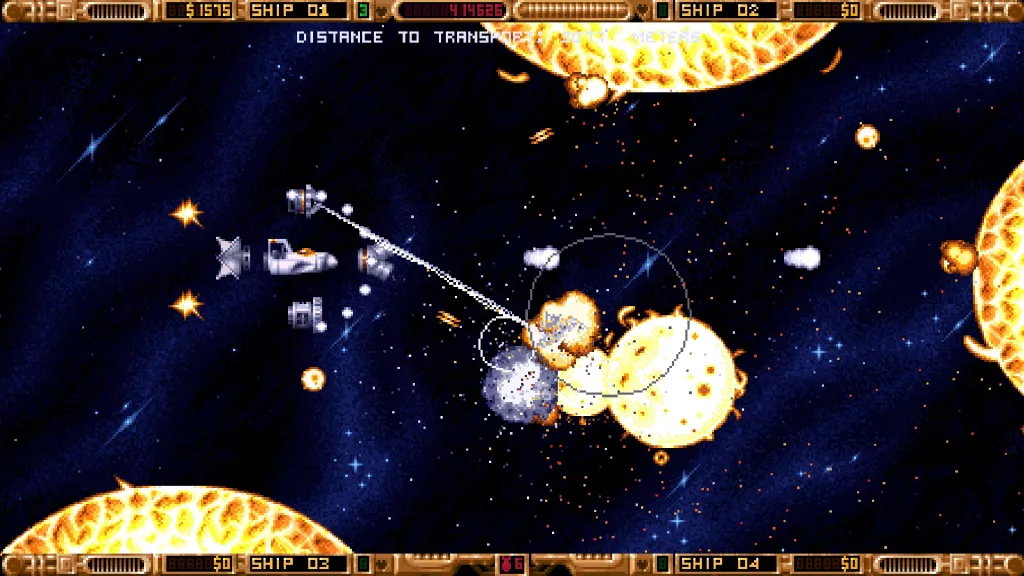
In this level you have to dodge a series of bullet patterns using precise movements. I played over and over, each time seeing slight improvement, but to no avail. After several more deaths I still couldn’t last more than a minute or two. It’s slow going but I’m getting there.
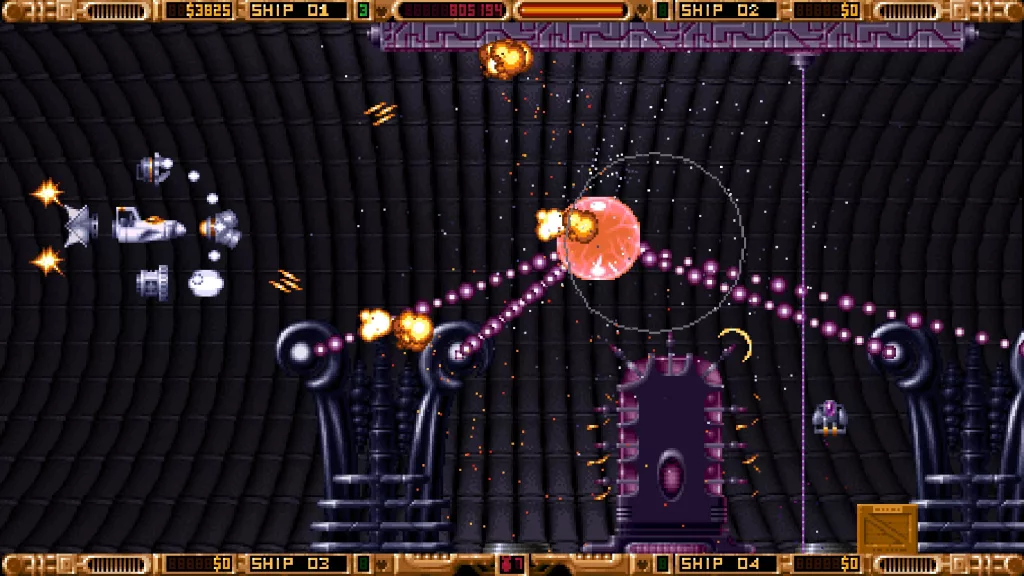
It’s the toughest challenge in the game. I don’t like how it basically makes all of your upgrades useless. But I do like the challenge. I’m going to keep at it and defeat Shenandoa eventually.
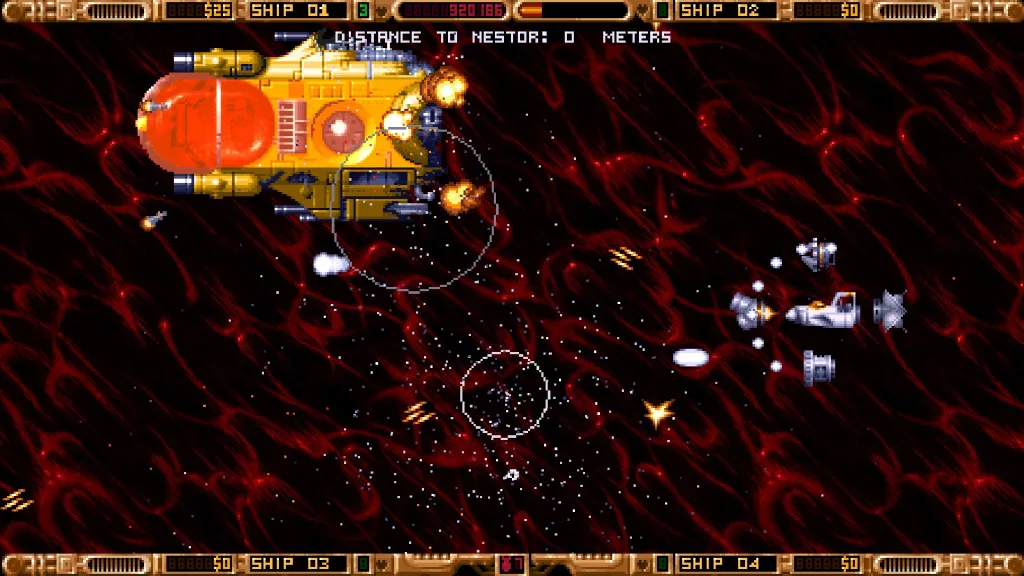
The easy mode feels like a practise run. After completing it in this mode, you can move onto the harder difficulties to challenge yourself more. This is what old school shooters were really about: challenge. And this game is no exception.
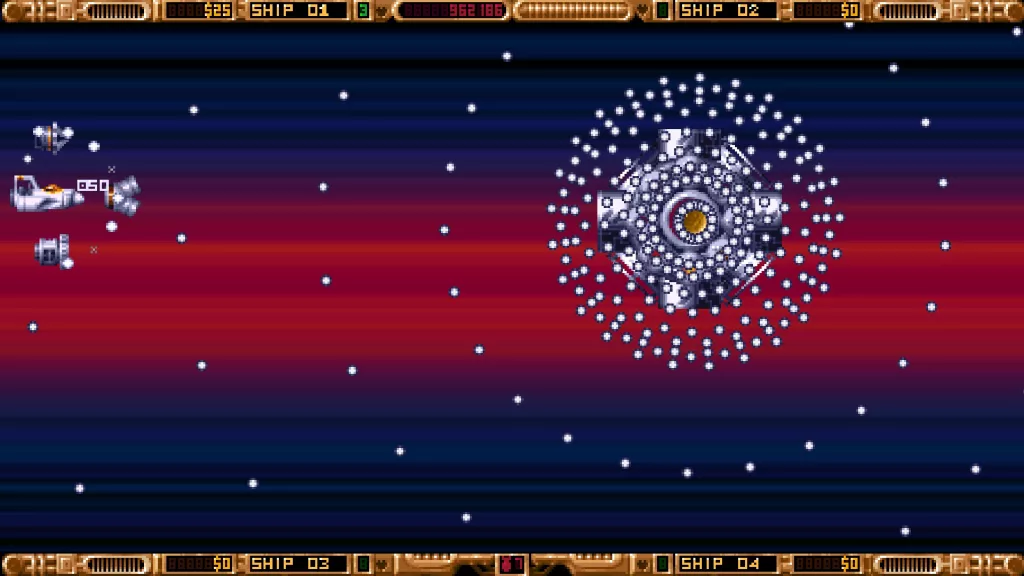
The addition of an easier game mode is almost certainly a modern addition, but that doesn’t mean this game can’t be as challenging as other games were in the 90s. This is definitely a game I will keep coming back to. It’s sucked me in. I need to beat it, and I need to beat it properly.




